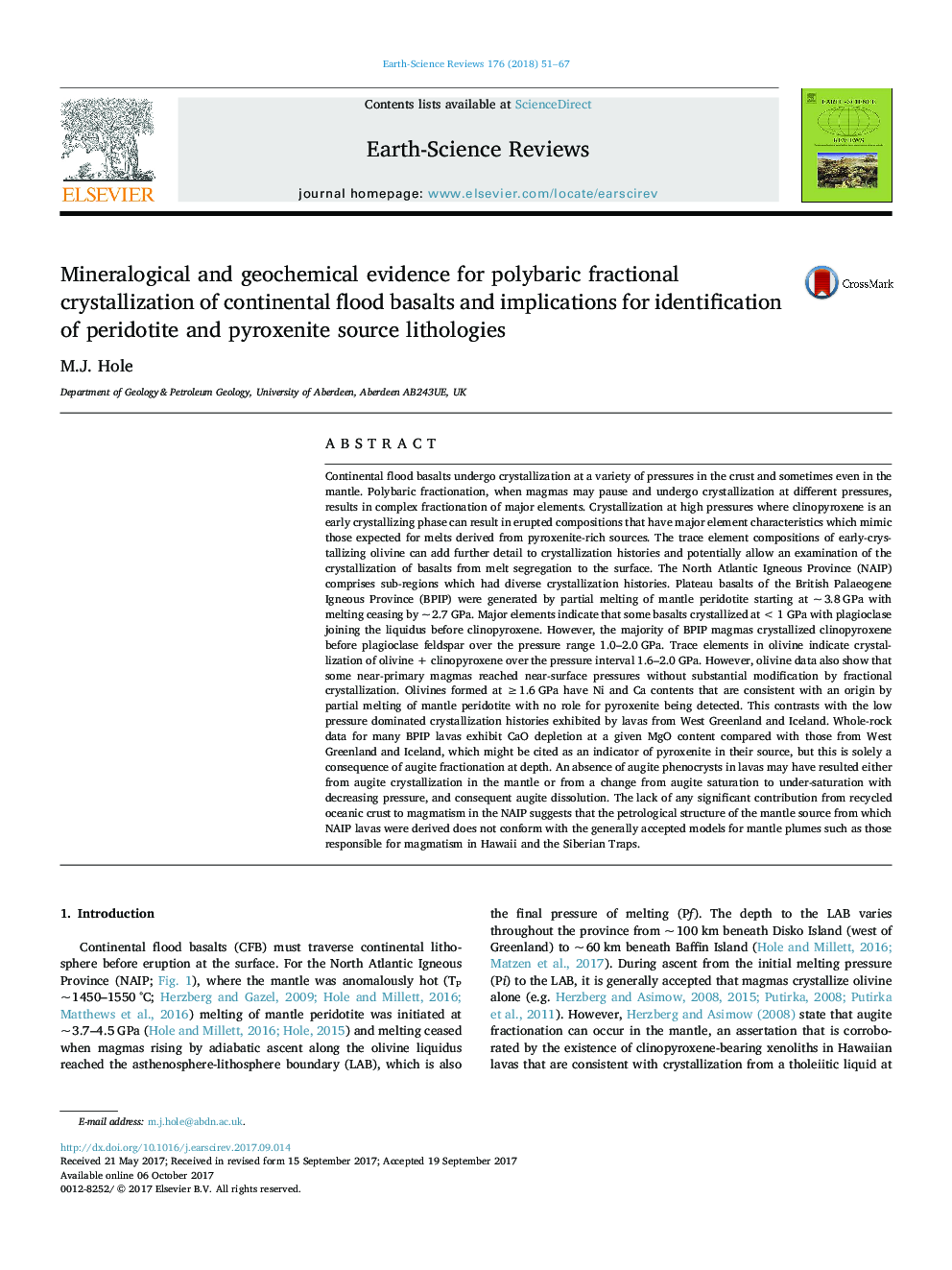| کد مقاله | کد نشریه | سال انتشار | مقاله انگلیسی | نسخه تمام متن |
|---|---|---|---|---|
| 5785018 | 1639926 | 2018 | 17 صفحه PDF | دانلود رایگان |
Continental flood basalts undergo crystallization at a variety of pressures in the crust and sometimes even in the mantle. Polybaric fractionation, when magmas may pause and undergo crystallization at different pressures, results in complex fractionation of major elements. Crystallization at high pressures where clinopyroxene is an early crystallizing phase can result in erupted compositions that have major element characteristics which mimic those expected for melts derived from pyroxenite-rich sources. The trace element compositions of early-crystallizing olivine can add further detail to crystallization histories and potentially allow an examination of the crystallization of basalts from melt segregation to the surface. The North Atlantic Igneous Province (NAIP) comprises sub-regions which had diverse crystallization histories. Plateau basalts of the British Palaeogene Igneous Province (BPIP) were generated by partial melting of mantle peridotite starting at ~ 3.8 GPa with melting ceasing by ~ 2.7 GPa. Major elements indicate that some basalts crystallized at < 1 GPa with plagioclase joining the liquidus before clinopyroxene. However, the majority of BPIP magmas crystallized clinopyroxene before plagioclase feldspar over the pressure range 1.0-2.0 GPa. Trace elements in olivine indicate crystallization of olivine + clinopyroxene over the pressure interval 1.6-2.0 GPa. However, olivine data also show that some near-primary magmas reached near-surface pressures without substantial modification by fractional crystallization. Olivines formed at â¥Â 1.6 GPa have Ni and Ca contents that are consistent with an origin by partial melting of mantle peridotite with no role for pyroxenite being detected. This contrasts with the low pressure dominated crystallization histories exhibited by lavas from West Greenland and Iceland. Whole-rock data for many BPIP lavas exhibit CaO depletion at a given MgO content compared with those from West Greenland and Iceland, which might be cited as an indicator of pyroxenite in their source, but this is solely a consequence of augite fractionation at depth. An absence of augite phenocrysts in lavas may have resulted either from augite crystallization in the mantle or from a change from augite saturation to under-saturation with decreasing pressure, and consequent augite dissolution. The lack of any significant contribution from recycled oceanic crust to magmatism in the NAIP suggests that the petrological structure of the mantle source from which NAIP lavas were derived does not conform with the generally accepted models for mantle plumes such as those responsible for magmatism in Hawaii and the Siberian Traps.
Journal: Earth-Science Reviews - Volume 176, January 2018, Pages 51-67
